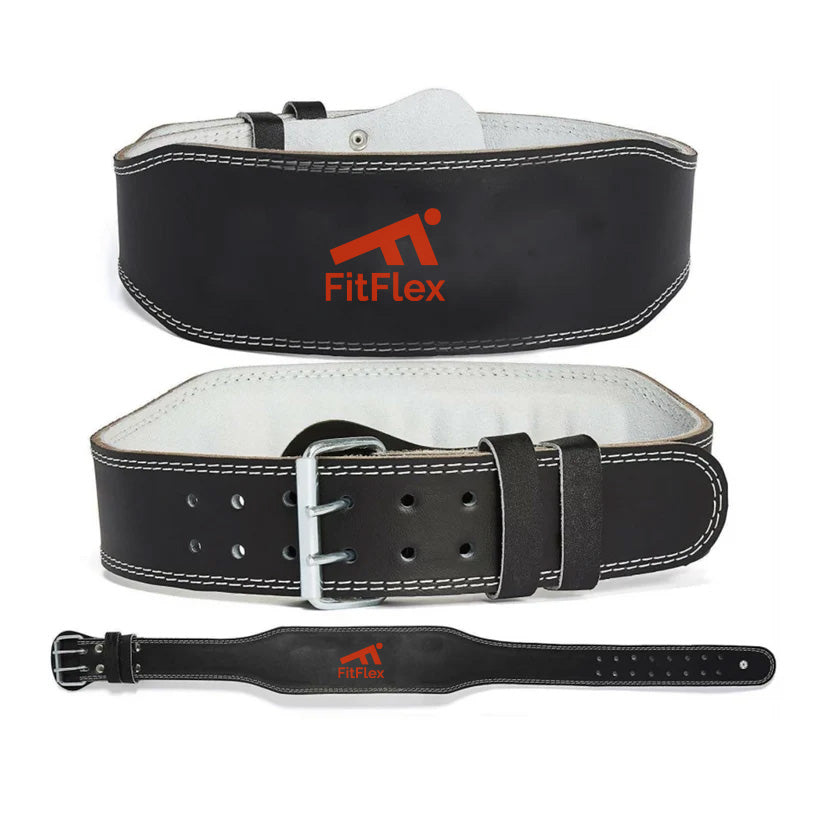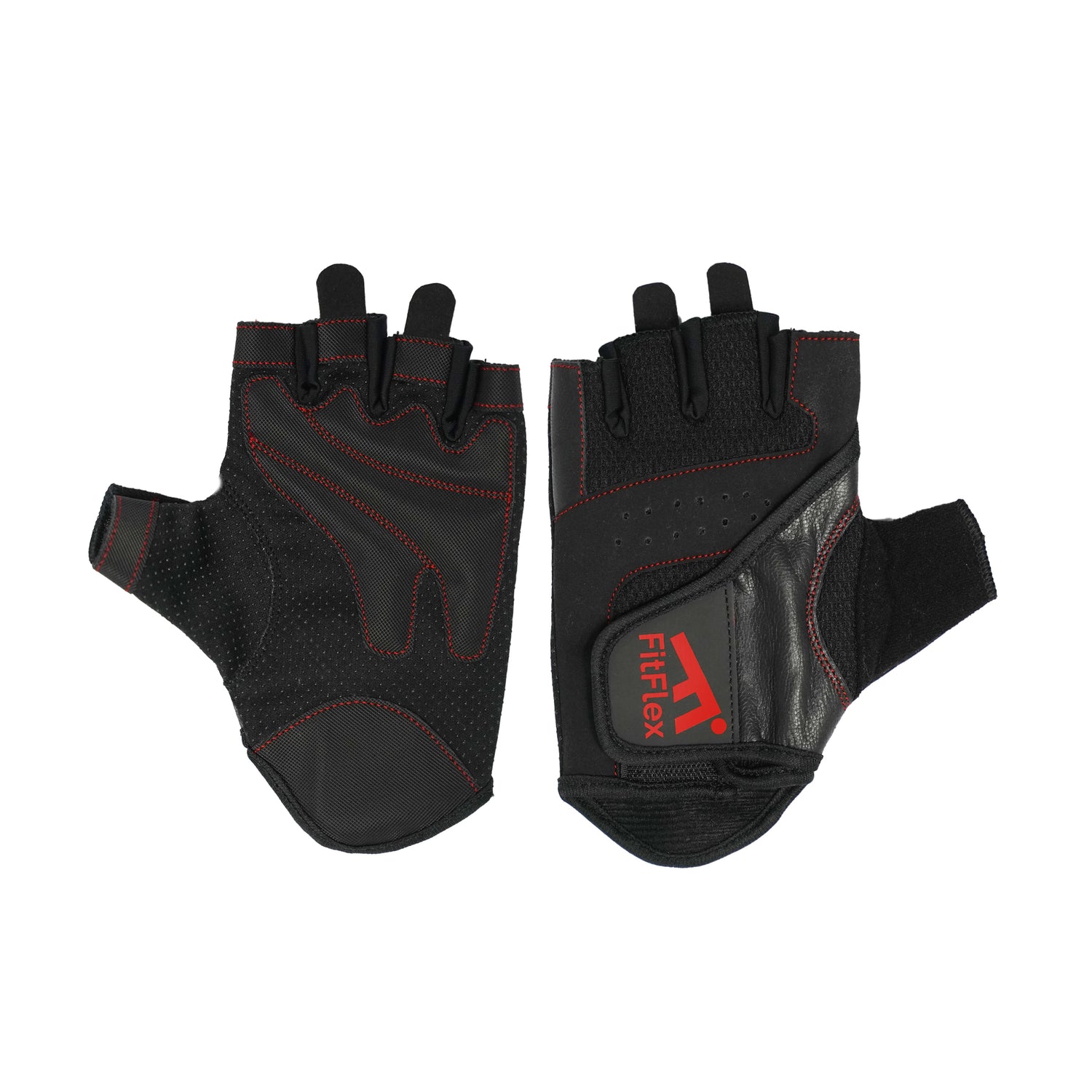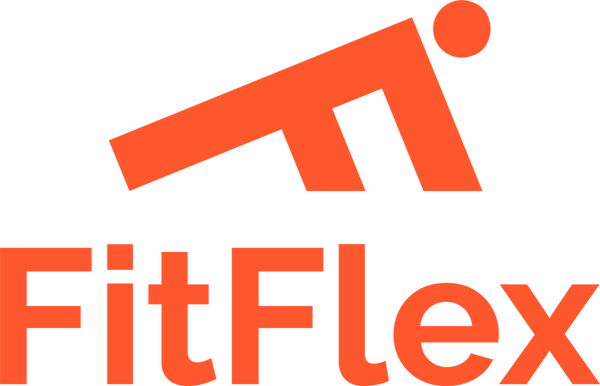
Maximize Your Lifting Power with a Weight Lifting Belt
Share
Whether you're a seasoned lifter or just starting out, adding a weight lifting belt to your gym routine can make a world of difference. Designed to stabilize and protect your core, a lifting belt allows you to lift heavier, train harder, and perform at your best. But how exactly does a lifting belt work, and why should you consider adding one to your gym essentials? Let's dive in!
What is a Weight Lifting Belt?
A weight lifting belt is a thick, sturdy belt worn around the waist, usually made of leather or durable synthetic material. It's designed to support your lower back and core during heavy lifts, like squats, deadlifts, and overhead presses. The belt provides an extra layer of stability, allowing you to safely lift heavier weights and maintain proper form.
Why Use a Weight Lifting Belt?
-
Enhanced Core Stability
Wearing a lifting belt increases intra-abdominal pressure, giving your core more stability and strength when lifting. This additional support helps reduce the strain on your lower back and minimizes the risk of injury. By engaging your core more effectively, you can lift with greater confidence and control. -
Increased Lifting Capacity
With the added support of a lifting belt, you can push yourself to lift heavier weights. The belt acts as a form of "external support," allowing your core muscles to work with more force and less risk of injury. Many lifters find that wearing a belt helps them break through strength plateaus and reach new personal bests. -
Improved Form and Technique
A weight lifting belt encourages better posture and form, especially during complex lifts. By helping you maintain a more upright position, the belt keeps your spine aligned, reducing the risk of strain and injury. For beginners, it can be a helpful tool to learn proper lifting technique safely. -
Reduced Lower Back Strain
Heavy lifting places a lot of pressure on the lower back. A lifting belt helps distribute this pressure more evenly across the abdomen, relieving some of the direct stress on your lower back. This is especially beneficial for people with lower back issues or those performing high-intensity lifts regularly.
When Should You Use a Weight Lifting Belt?
While a weight lifting belt offers many benefits, it's not necessary for every exercise. Here are some scenarios where a belt can be particularly useful:
- Heavy Squats: When you're lifting near or above 80% of your max, a belt can provide the added support you need to handle the load safely.
- Deadlifts: Lifting a heavy weight off the ground places considerable strain on your lower back, and a belt helps to stabilize your core.
- Overhead Presses: For exercises that involve lifting weight above your head, a belt provides extra core support to keep your balance and protect your lower back.
- Powerlifting Competitions: If you’re training for powerlifting or bodybuilding, a belt is an essential tool that can give you an edge in maximizing your lifts.
How to Properly Wear a Weight Lifting Belt
To get the full benefits of a weight lifting belt, it's essential to wear it correctly. Here’s how:
-
Position the Belt Properly: Place the belt around your midsection, slightly above your hip bones and below your ribcage. It should cover your lower back and sit snugly against your core.
-
Tighten to the Right Fit: Fasten the belt tightly, but not so tight that it restricts your breathing or range of motion. You should be able to take a deep breath against the belt and feel resistance.
-
Engage Your Core: When lifting, take a deep breath into your core and brace your abdominal muscles. The pressure against the belt will give you stability and help you lift more effectively.
Choosing the Right Weight Lifting Belt
When selecting a lifting belt, there are a few things to keep in mind:
- Material: Leather belts are sturdy and durable, while synthetic belts are lighter and more flexible. Choose the one that suits your comfort and needs.
- Width and Thickness: A standard lifting belt is 4 inches wide and around 10-13mm thick. This size provides ample support for heavy lifts.
- Closure Type: Some belts use a prong closure, while others use a lever or Velcro. Prong and lever belts are generally more secure, while Velcro belts are easier to adjust.
Caring for Your Weight Lifting Belt
To keep your belt in good condition:
- Store Properly: Avoid leaving it in direct sunlight or humid areas, as these can damage the material.
- Clean Regularly: Use a damp cloth to wipe it down after workouts. For leather belts, consider using leather conditioner to keep it supple.
- Avoid Over-Tightening: Tightening the belt too much can damage its material over time. Find the right fit that’s snug but not overly tight.
Why You Should Invest in a Quality Weight Lifting Belt
Adding a high-quality weight lifting belt to your gym gear can take your performance to the next level. Not only does it provide the support and stability you need for heavy lifts, but it also helps you build confidence in your lifting abilities. Whether you're aiming to increase strength, improve technique, or prevent injuries, a weight lifting belt is a valuable tool that can help you reach your fitness goals.
Get your Weight Lifting Belt: https://shop.fitflexapp.com/products/weight-lifting-gym-belt

